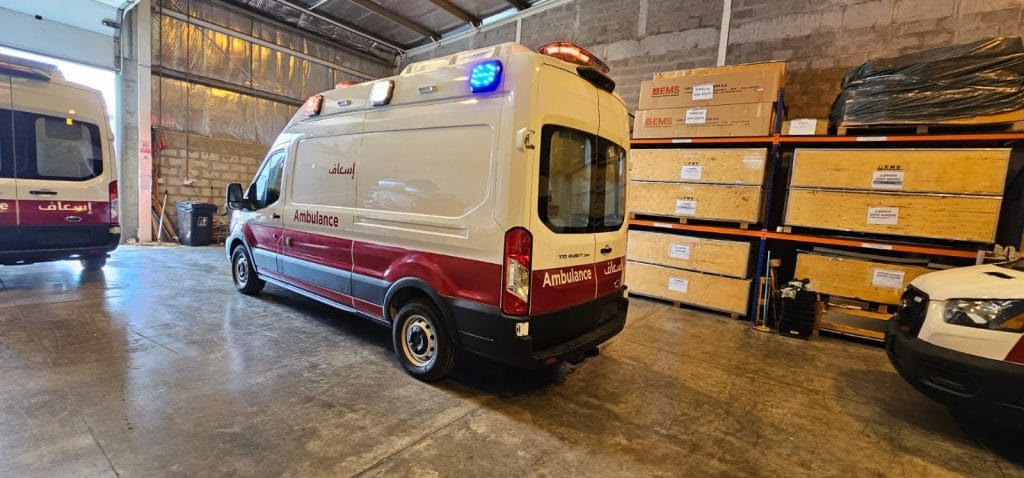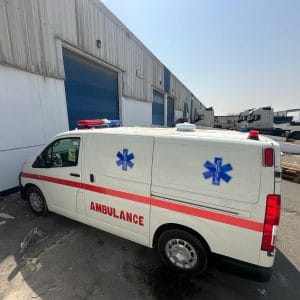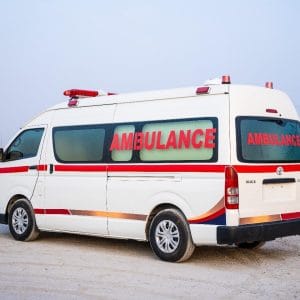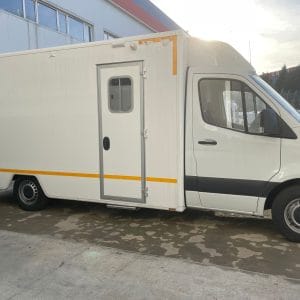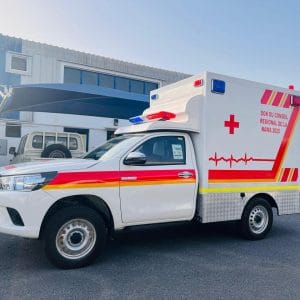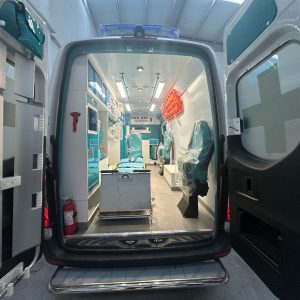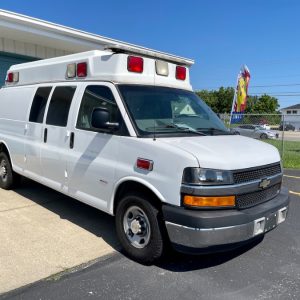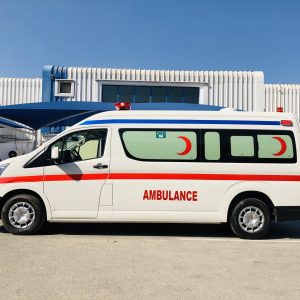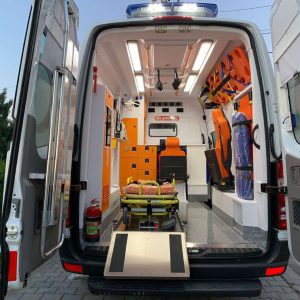EN 1789 Certificate; In the world of emergency medical services (EMS), where chaos is met with calm expertise and every second is a battle for life, equipment cannot be a variable. It must be a guarantee. The vehicle that speeds into this chaos is more than a van with lights and a siren; it is a mobile clinical environment, a sanctuary of advanced medicine, and a crucial link in the chain of survival.
This guarantee is codified in a single, powerful document: the EN 1789 certificate.
More than just a piece of paper, an EN 1789 certificate is a formal declaration that an ambulance has been designed, constructed, and tested to meet the most rigorous international standards for medical vehicles. It is the definitive benchmark that separates a compliant, life-saving asset from a merely converted vehicle.
What is EN 1789?
EN 1789 is a European Standard, formally titled “Medical vehicles and their equipment – Road ambulances.” The latest version is EN 1789:2020.
It is not a guideline or a recommendation; it is a comprehensive set of technical specifications and performance requirements that cover every critical aspect of an ambulance’s design and function. Its purpose is twofold:
- To ensure the safety of patients and crew.
- To provide an environment that supports the effective delivery of medical care during transport.
Crucially, an EN 1789 certificate is issued by an independent, accredited “notified body” after the vehicle model has passed a series of stringent tests. A manufacturer cannot simply self-declare compliance.
Why is the EN 1789 Certificate So Critical?
Purchasing an ambulance without an EN 1789 certificate is a significant risk. The certificate mitigates these risks by ensuring:
1. Structural Integrity and Crash Safety:
An ambulance is subjected to immense stresses—swerving, hard braking, and even potential collisions. EN 1789 sets strict requirements for:
- Module Integrity: The patient module (the box on the chassis) must be robustly constructed and securely bonded to the vehicle chassis to prevent separation in an accident.
- Occupant Restraint: It specifies the strength and placement of anchor points for the paramedics’ seats and the patient stretcher. In a crash, these restraint systems must hold, preventing crew and patient from becoming projectiles.
- Material Safety: Materials used in the interior must be flame-retardant.
2. Safety for Patients and Crew:
This is the heart of the standard.
- Slip and Fall Prevention: The floor must be anti-slip, and grab handles must be strategically placed for both crew and mobile patients.
- Secure Storage: All equipment, especially heavy items like oxygen cylinders, defibrillators, and ventilators, must be stored in locked compartments with shock-absorbent mounts. An unsecured oxygen cylinder in a crash becomes a deadly missile.
- Infection Control: Surfaces must be smooth, seamless, and easy to clean and disinfect.
3. A Reliable and Interference-Free Electrical System:
An ambulance is a rolling electronics lab. EN 1789 certification guarantees:
- Electrical Separation: The medical electrical system (powering life-support devices) is isolated from the vehicle’s engine electrical system. This prevents power surges from the engine from damaging sensitive medical equipment.
- Electromagnetic Compatibility (EMC): This is a vital but often overlooked aspect. The certificate ensures that all electronic devices in the ambulance (radio, lights, alternator) do not create “electrical noise” that can interfere with and cause critical devices like defibrillators or ventilators to malfunction.
- Adequate Backup Power: The system must be able to power all essential medical equipment for a specified duration on battery power alone (“silent mode”) without the engine running.
4. A Conducive Clinical Environment:
The standard ensures the vehicle supports, rather than hinders, medical care.
- Ventilation and Climate Control: The HVAC system must be powerful enough to maintain a safe and comfortable temperature for a critically ill patient and a working crew, even in extreme outdoor climates.
- Lighting: Interior lighting must be sufficient for complex medical procedures (like starting an IV or intubation) without causing glare or discomfort to the patient. Exterior warning lights must meet specific visibility standards.
- Noise Levels: Internal ambient noise is regulated so paramedics can hear equipment alarms and communicate clearly with each other and the patient.
- Working Dimensions: The standard defines minimum space requirements around the stretcher, allowing paramedics to perform CPR and other life-saving procedures effectively while the vehicle is in motion.
The Types of Ambulances Defined by EN 1789
The standard categorizes ambulances into types, which helps in specifying the right vehicle for the right purpose:
- Type A: Patient Transport Ambulance
- Designed for non-urgent transport of patients who require basic care and monitoring during the journey.
- Not typically equipped for advanced life support (ALS) procedures.
- Type B: Emergency Ambulance
- The standard vehicle for emergency response and transport.
- Equipped for providing advanced life support (ALS) and carrying multiple paramedics.
- Type C: Mobile Intensive Care Unit (MICU)
- Designed for critical care transport, often between hospitals (inter-facility transfer).
- Provides a full ICU environment on wheels, with space and mounting points for extensive equipment like multiple infusion pumps, advanced ventilators, and monitoring systems.
- Typically has a larger body, often based on a chassis like the Ford Transit long-wheelbase.
EN 1789 Certificate vs. Manufacturer’s Claim: How to Verify
This is a critical distinction. A manufacturer may claim a vehicle is “built to EN 1789 standards,” but this is not the same as having a formal certificate.
- “Built to EN 1789”: This can be a marketing claim, implying the manufacturer used the standard as a guide. There is no independent verification. Key safety aspects, especially crash safety and EMC, are almost certainly not validated.
- “EN 1789 Certified”: This means the vehicle model has been tested and verified by an independent, accredited body (e.g., TÜV in Germany, SP in Sweden) and holds a formal certificate of compliance.
How to Verify Authenticity:
- Ask for the Certificate: Any reputable manufacturer will proudly provide a copy of the official EN 1789 certificate for the specific vehicle model you are purchasing.
- Check the Notified Body: Look for the logo and name of the independent testing agency on the certificate.
- Review the Scope: The certificate will specify the exact vehicle model, chassis, and body type it applies to.
Conclusion: The Non-Negotiable Standard for Excellence
In conclusion, the EN 1789 certificate is not an optional extra or a bureaucratic hurdle. It is the very foundation of a modern, safe, and effective ambulance service. It embodies a commitment to duty of care—for the vulnerable patient relying on its clinical capabilities, and for the dedicated paramedics who trust it as their workplace.
For any organization—be it a government health service, a private hospital group, or a humanitarian agency—specifying an EN 1789 certified ambulance is the only way to ensure that the vehicle you are deploying is a proven, reliable, and safe asset. It is the definitive mark of a manufacturer’s expertise and commitment to building not just a vehicle, but a mobile lifeline.


